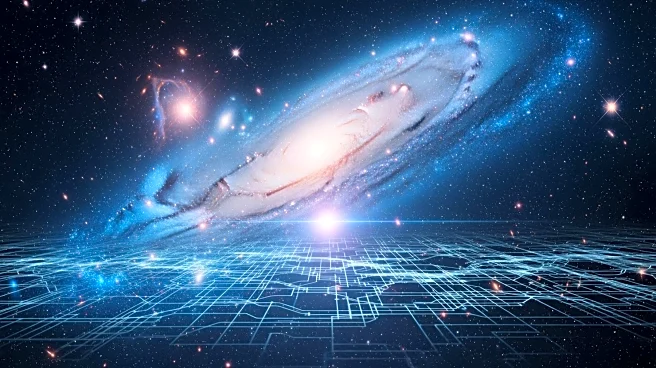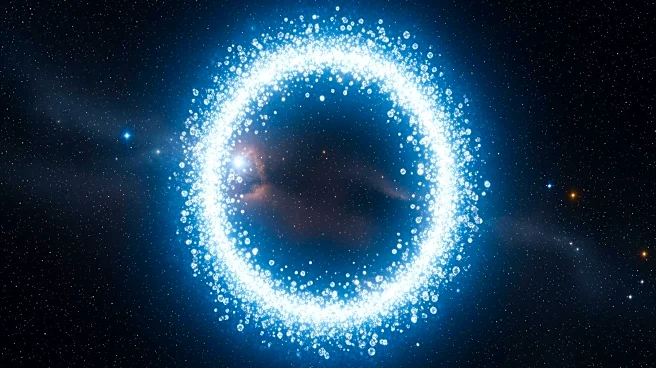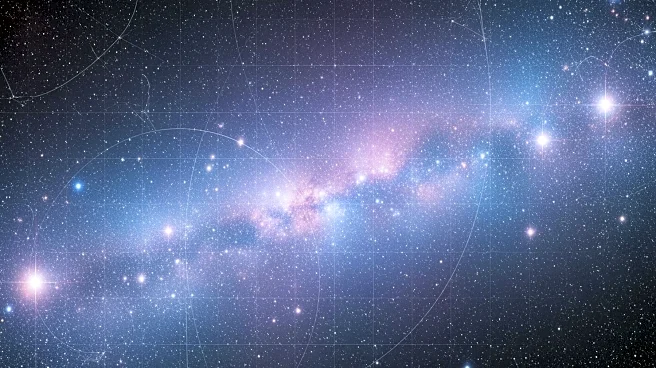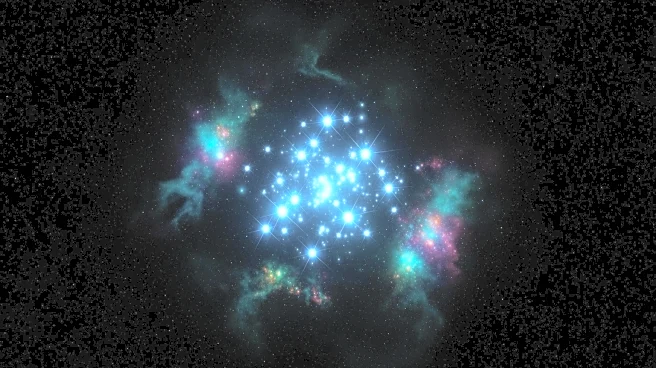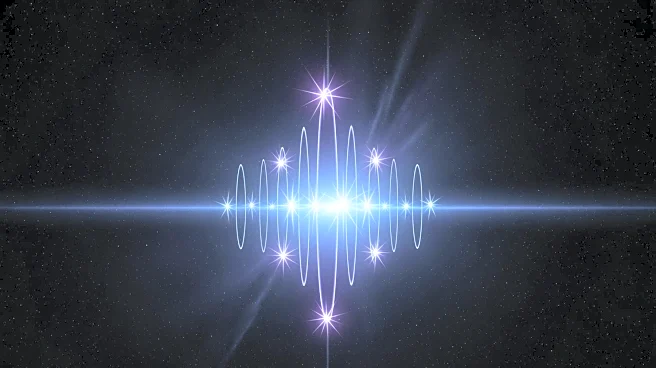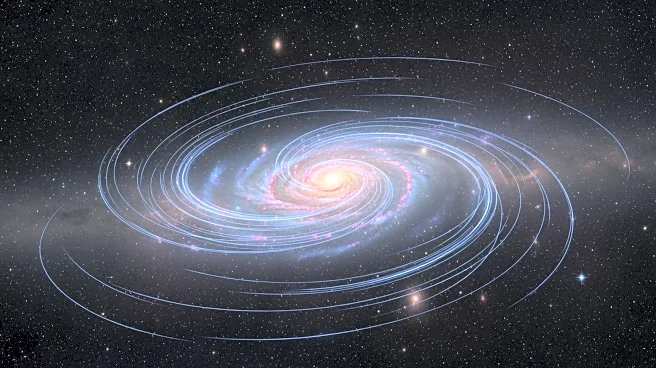What's Happening?
Researchers at RIKEN's Center for Interdisciplinary Theoretical and Mathematical Sciences have successfully created a simulation of the Milky Way galaxy, mapping every one of its 100 billion stars over
10,000 years of galactic time. Led by Keiya Hirashima, the team utilized a deep learning surrogate model to overcome computational challenges, allowing for individual star resolution. This AI-enhanced simulation captures both galaxy-wide dynamics and individual stellar events, such as supernova explosions, with remarkable efficiency. The breakthrough was presented at the Supercomputing Conference, showcasing the potential of artificial intelligence to transform astrophysical modeling.
Why It's Important?
This simulation marks a significant milestone in astrophysics, providing a comprehensive digital twin of the Milky Way that can test theories of galaxy formation and evolution. The ability to simulate individual stars offers unprecedented insights into stellar life cycles and galactic dynamics. The use of AI to enhance traditional physics simulations demonstrates the transformative potential of machine learning in scientific research, potentially impacting fields like climate science and weather prediction. By reducing the computational time from 36 years to just 115 days, this approach could lead to more efficient and accurate models across various scientific disciplines.


